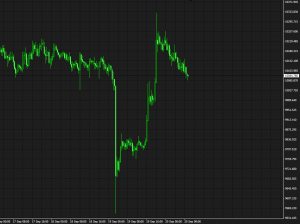Cryptocurrencies are systems that allow for the secure payments of online payments that are denominated in terms of a virtual “coin,” which represents ledger entries internal to its operation. “Crypto” refers to the various encryption algorithms and cryptographic techniques that are employed.
However, when diving into the best cryptocurrency investment strategies, it is wise to begin in assessing risk tolerance. Investors tend to underestimate risk in rising markets and overestimate it in falling markets. Sometimes, doing the opposite can work wonders in your investing career.
Another thing to note is to make sure the amount of risk you are willing to take is aligned with your set goals. The higher the returns sought, the higher the risk that has to be made.
Getting rich quick is a dream of every trader; however, it is just that – a dream. Keeping a realistic timescale to meet your goals is essential to remember.
With that said, here are the best cryptocurrency investment strategies that are fundamental.
• Buy and Hold Strategy
This is the ultimate of long-term cryptocurrency investment strategies. It assumes that the value of the cryptocurrency will be higher in the future, and therefore it is best to purchase today. Investors who employ this strategy will have to decide whether to make their full investment immediately, at one price or to get on a steady buying program to build their position to the ideal size.
With this strategy, the investor is always focused on buying at the best price for maximum profits. They also have a long-term focus, which allows them to avoid the stress of monetary price dips. It all comes back to the value of the currency, not any white noise from the price movement.
• Buy the Dip
This strategy also assumes the benefit would go higher in the future. Investors that use this strategy ultimately show the market full trust in their valuation by purchasing the cryptocurrency fund when the market goes lower.
Buying the dip leads to adding your position at a lower cost. This would lower overall cost bias in hopes of increasing your long-term profit in the cryptocurrency fund. So as long as the market goes up or returns to its initial rate, the benefit would still be gained. This, in turn, gives the investor opportunities to add to their position at a discount.
Cryptocurrency as an Investment
Unlike most markets, cryptocurrencies hold the promise of making it easier to transfer funds directly between two parties in a transaction without the involvement of third-parties such as banks or credit card companies. Instead, they are facilitated through the use of public and private keys for security purposes. Cryptocurrency investment fund transfers are done with minimal processing fees, allowing users to avoid steep fees charged for wire transfers.
Another feature of cryptocurrency is its appeal and function of the blockchain technology it uses to store an online ledger of all transactions ever conducted. Every new block generated must be verified by the ledgers of each user on the market, which makes it near impossible to forge transaction histories.
While blockchains are secure, other aspects of the cryptocurrency ecosystem aren’t entirely immune to the threat of hacking. Still, many observers see the digital currency as hope that cryptocurrency funds can exist with preserved value and is outside the influence of central banks and governments.
As such, since cryptocurrencies are purely virtual and do not have a central repository, cryptocurrency funds can be wiped out by a computer crash if there is no backup copy of the holdings. Even only losing your private keys can cause a lot of problems.
Cryptocurrencies such as Bitcoin are making an impact on the financial markets with over 17.53 million Bitcoins with a market value worth $63 billion as of 2019. Bitcoin’s success has spawned many competitors, known as “altcoins” such as Litecoin, Namecoin, and Peercoin. Today, there are thousands of cryptocurrencies in existence, with a total value of over $120 billion.
